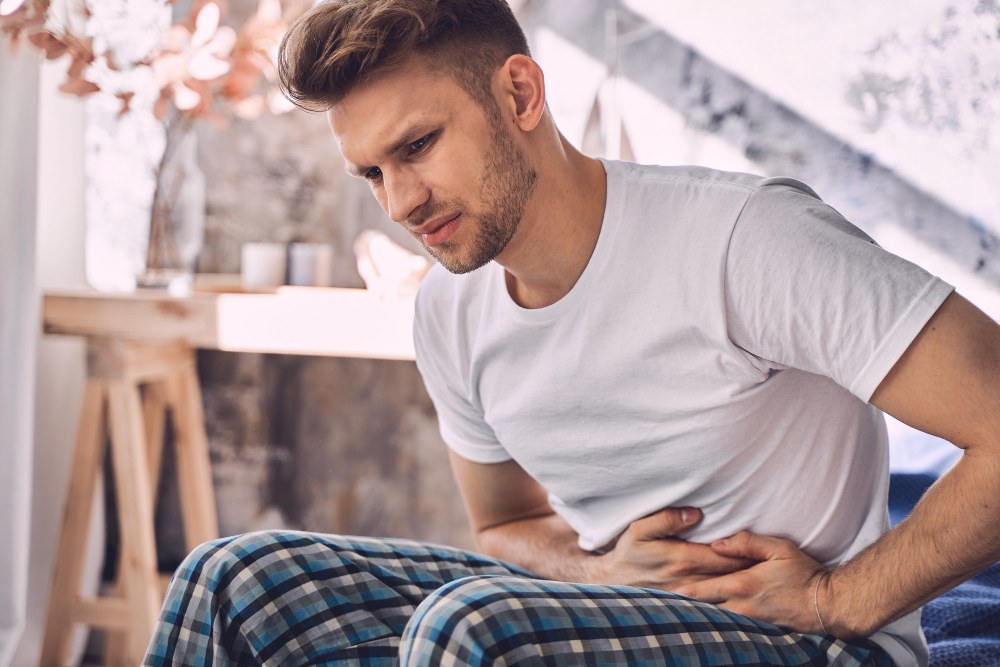
Urologic Chronic Pelvic Pain Syndrome (UCPPS) is a persistent and complex condition that affects millions of individuals worldwide, encompassing both men and women. As an umbrella term, UCPPS is used in research to describe various chronic urologic pain syndromes, including chronic prostatitis/chronic pelvic pain syndrome (CP/CPPS) in men and interstitial cystitis/painful bladder syndrome (IC/PBS) in women. This syndrome is characterized by ongoing, often debilitating pelvic pain and urinary discomfort, leading to a diminished quality of life for those affected.
What Is Urologic Chronic Pelvic Pain Syndrome?
UCPPS represents a group of chronic pain conditions associated with the pelvic region, particularly the bladder and surrounding areas. Men and women may experience similar symptoms, but specific conditions fall under UCPPS depending on gender:
- In Men: UCPPS primarily manifests as chronic prostatitis/chronic pelvic pain syndrome (CP/CPPS), marked by recurring pain and discomfort in the pelvic area, genitals, and lower abdomen. Men with CP/CPPS may also experience urinary symptoms and difficulties with sexual function, which further impact their quality of life.
- In Women: UCPPS often takes the form of interstitial cystitis/painful bladder syndrome (IC/PBS). IC/PBS is characterized by ongoing bladder pain, a persistent urge to urinate, and urinary frequency. For many women, IC/PBS symptoms can be severe, impacting daily activities and leading to emotional stress and fatigue.
According to the National Institute of Diabetes and Digestive and Kidney Diseases (NIDDK), UCPPS can affect individuals across different ages and backgrounds, although it’s more commonly diagnosed in women.
Exploring the Causes of UCPPS
The exact causes of UCPPS remain elusive, largely due to the complexity of urologic pain and its variable presentation among individuals. Researchers have identified several potential contributors, though no single cause has been pinpointed. Some of the main factors associated with UCPPS include:
- Nervous System Dysregulation: Evidence suggests that nervous system dysfunction may contribute to UCPPS. The central nervous system may become hypersensitive, leading to an amplified pain response even in the absence of a clear injury or infection.
- Immune and Inflammatory Response: Inflammation in the pelvic region and bladder walls is common in UCPPS patients, particularly those with interstitial cystitis. Chronic inflammation can lead to nerve irritation, which may cause persistent pain and discomfort. The National Institutes of Health (NIH) supports ongoing research to explore the role of immune system responses in chronic pain conditions like UCPPS.
- Genetics and Family History: Some studies have found that UCPPS may run in families, suggesting that genetic factors could influence susceptibility. Specific genes linked to immune function, pain perception, and inflammation could increase the risk of developing urologic pain syndromes.
- Environmental and Lifestyle Factors: Stress, diet, and lifestyle factors can exacerbate UCPPS symptoms. For example, dietary irritants like caffeine, alcohol, and spicy foods are known to worsen bladder symptoms in IC/PBS patients. High-stress levels may also lead to muscle tension and heightened pain perception.
- Muscle and Structural Issues: Pelvic floor muscle dysfunction, which affects the muscles supporting the bladder and other pelvic organs, is frequently associated with UCPPS. Tight or weak pelvic muscles can lead to pain, discomfort, and urinary issues. Physical therapy targeting these muscles is one approach used to manage UCPPS symptoms.
Symptoms of UCPPS: What to Expect
While UCPPS symptoms vary widely between individuals, there are common experiences that many patients share. Symptoms often include:
- Chronic Pelvic Pain: The defining symptom of UCPPS is persistent pelvic pain, which may range from mild to severe and can radiate to the lower back, genitals, and thighs. For some, the pain may feel like a burning or aching sensation, while others experience stabbing or sharp pains.
- Bladder Discomfort and Frequent Urination: Many UCPPS patients report a constant or frequent urge to urinate, often with minimal bladder relief. This symptom is especially prevalent in women with IC/PBS. Some individuals may need to urinate 20-30 times daily, significantly impacting their daily routines and sleep.
- Sexual Dysfunction: Both men and women with UCPPS often face sexual health challenges. In men, chronic prostatitis can lead to painful ejaculation and erectile dysfunction. Women with IC/PBS may experience pain during intercourse (dyspareunia), leading to intimacy issues and emotional distress.
- Psychological Impact: Living with chronic pain is physically and emotionally exhausting. Many people with UCPPS experience anxiety, depression, and feelings of frustration due to the unpredictability of their symptoms. Supportive counseling and coping strategies are often recommended as part of a holistic treatment plan.
For more detailed information on the symptoms and impact of UCPPS, consult the Centers for Disease Control and Prevention (CDC), which offers resources on chronic pain and mental health support.
Diagnosis of UCPPS
Diagnosing UCPPS is often challenging due to its overlap with other pelvic and urologic conditions. Healthcare providers typically start by taking a comprehensive medical history and conducting a physical examination to rule out infections, kidney stones, or other identifiable causes of pelvic pain.
- Urine Tests: Urine samples are commonly used to check for bacterial infections or other abnormalities.
- Imaging Tests: Ultrasound or CT scans may be performed to visualize the bladder, prostate, and pelvic area, helping to rule out structural issues.
- Cystoscopy: For IC/PBS patients, a cystoscopy may be used to examine the bladder walls directly and identify areas of inflammation or damage. This procedure involves inserting a thin scope into the bladder and is often performed under local anesthesia.
- Pelvic Floor Examination: In both men and women, a pelvic exam may help identify muscle tenderness, spasm, or weakness that could contribute to pain. A specialized pelvic floor therapist may perform a more detailed assessment to tailor physical therapy treatments accordingly.
Since there’s no definitive test for UCPPS, diagnosis often involves ruling out other conditions with similar symptoms and relying on patient-reported experiences to guide the diagnostic process.
Treatment and Management Options for UCPPS
Effective treatment of UCPPS requires a multidisciplinary approach, combining medical, physical, and psychological interventions tailored to each patient’s needs. Here are common treatment strategies:
1. Medication
Several medications can help manage UCPPS symptoms, targeting inflammation, pain, or bladder function.
- Anti-inflammatory Drugs: NSAIDs, such as ibuprofen, may be recommended to reduce inflammation and provide temporary pain relief.
- Muscle Relaxants: These medications can alleviate pelvic muscle tension, which is often a source of discomfort for UCPPS patients. Muscle relaxants can be taken orally or in suppository form for targeted relief.
- Bladder Instillations: For IC/PBS patients, bladder instillations involve inserting medications directly into the bladder to soothe inflamed tissue and alleviate symptoms.
- Antidepressants and Anti-Anxiety Medications: In low doses, certain antidepressants can relieve chronic pain. Anti-anxiety medications may also help patients manage the stress and mental health impact of living with UCPPS.
For more information on medications and their effects, visit the U.S. Food and Drug Administration (FDA).
2. Physical Therapy
Physical therapy for UCPPS focuses on relaxing and strengthening the pelvic floor muscles, which may alleviate pain and improve bladder function. Techniques include:
- Pelvic Floor Therapy: Physical therapists trained in pelvic health use manual manipulation, biofeedback, and exercises to reduce pelvic muscle tension and improve control. This therapy is often highly effective in reducing pain and urinary symptoms.
- Trigger Point Release: Physical therapists can identify and release trigger points, which are areas of tight muscle that may be causing pain or discomfort. Trigger point therapy can offer lasting relief when practiced consistently.
3. Diet and Lifestyle Modifications
Dietary changes are essential for managing IC/PBS symptoms, as certain foods and drinks can irritate the bladder. Common irritants include:
- Caffeine and Alcohol: These substances can worsen urinary urgency and bladder pain. Reducing or eliminating them from the diet can improve symptoms.
- Spicy and Acidic Foods: Tomatoes, citrus fruits, and spicy foods are known irritants for many UCPPS patients. A “bladder-friendly” diet may vary for each person, and identifying specific triggers can provide better symptom control.
4. Behavioral Therapy and Mental Health Support
Living with chronic pain can lead to psychological strain. Behavioral therapies, such as Cognitive-Behavioral Therapy (CBT), help patients manage stress, develop coping strategies, and reduce the emotional impact of UCPPS. Psychological support is crucial, as mental well-being significantly influences pain perception and management.
5. Surgical Options
Surgery is typically reserved for severe cases of UCPPS that do not respond to conservative treatments. Surgical procedures may involve removing
inflamed bladder tissue or nerve interventions to reduce pain, though surgery is generally a last resort.
Coping Strategies and Support for UCPPS Patients
In addition to medical treatments, self-care practices play a significant role in managing UCPPS symptoms:
- Stress Management: Chronic pain can worsen under stress, making stress reduction techniques valuable. Practices such as yoga, meditation, and mindfulness are effective for many UCPPS patients.
- Support Groups: Connecting with others who experience UCPPS can provide emotional support and practical advice. Support groups, both in-person and online, allow individuals to share experiences and coping strategies.
Conclusion
Urologic Chronic Pelvic Pain Syndrome is a complex and multifaceted condition that requires a personalized, multidisciplinary approach. By combining medical treatments, lifestyle adjustments, and mental health support, individuals with UCPPS can often achieve symptom relief and improve their quality of life. Ongoing research by organizations such as the National Institutes of Health (NIH) is helping to further understand and treat this challenging condition, bringing hope to those affected by chronic pelvic pain.



